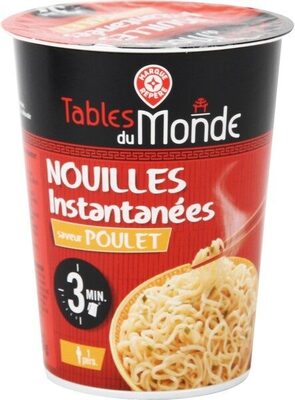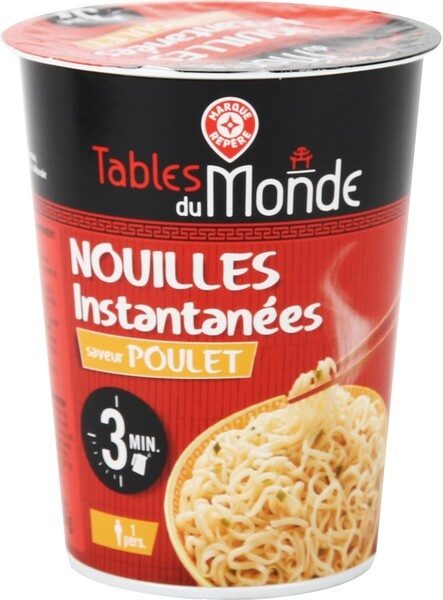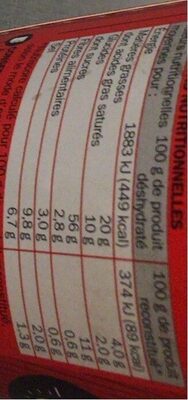Nouille asiatique poulet - Tables du Monde - 61,5 g
This product page is not complete. You can help to complete it by editing it and adding more data from the photos we have, or by taking more photos using the app for Android or iPhone/iPad. Thank you!
×
Some of the data for this product has been provided directly by the manufacturer Scamark.
Barcode: 3564706501874 (EAN / EAN-13)
Quantity: 61,5 g
Brands: Tables du Monde, Marque Repère
Categories: Plant-based foods and beverages, Plant-based foods, Cereals and potatoes, Cereals and their products, Dried products, Pastas, Dried products to be rehydrated, Noodles, Instant noodles
Stores: Leclerc
Countries where sold: France
Matching with your preferences
Environment
Carbon footprint
Packaging
Transportation
Threatened species
Other information
Preparation: 1. Ouvrez la cup et versez le contenu du sachet à l'intérieur. 2. Remplissez la cup d'eau bouillante jusqu'au repère 3. Refermez la cup et attendez 3 min. Ouvrez, mélangez et dégustez !
Report a problem
Data sources
Product added on by kiliweb
Last edit of product page on by melleeos.
Product page also edited by foodvisor, fpdsurveys, kioyo777, moon-rabbit, openfoodfacts-contributors, org-scamark, scamark, tacite-mass-editor, teolemon, yuka.B4JFHeCkDZ0iJvOI6ZA6whqwEbj-Gc1UKW8UoQ, yuka.L5REGP-6FZcqB_rX_rANgSSrG87KINVzN3oKoQ, yuka.SEo4OUtQaytoc0FHeFBFazh3M085TXh2NHNHRWIwR1dDdlF0SVE9PQ, yuka.WTVrS05Za29tUGNGZy9NRjVqNzNwL3hvbHFTNUJGMm1ETXdwSVE9PQ, yuka.WUt3blNyc0VoTU5XeDhGdXhCN1gvSUpzNWFlTWNYN3NDdllVSWc9PQ, yuka.sY2b0xO6T85zoF3NwEKvlkV2V_DZnBXFESTQqEup2NevI4TQPvdX2qymH6o.








